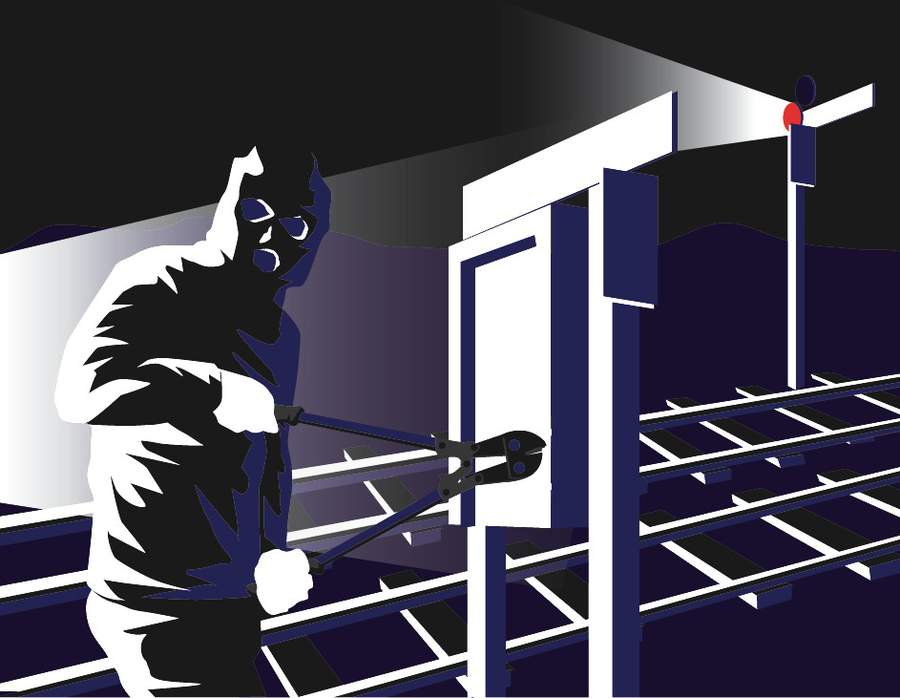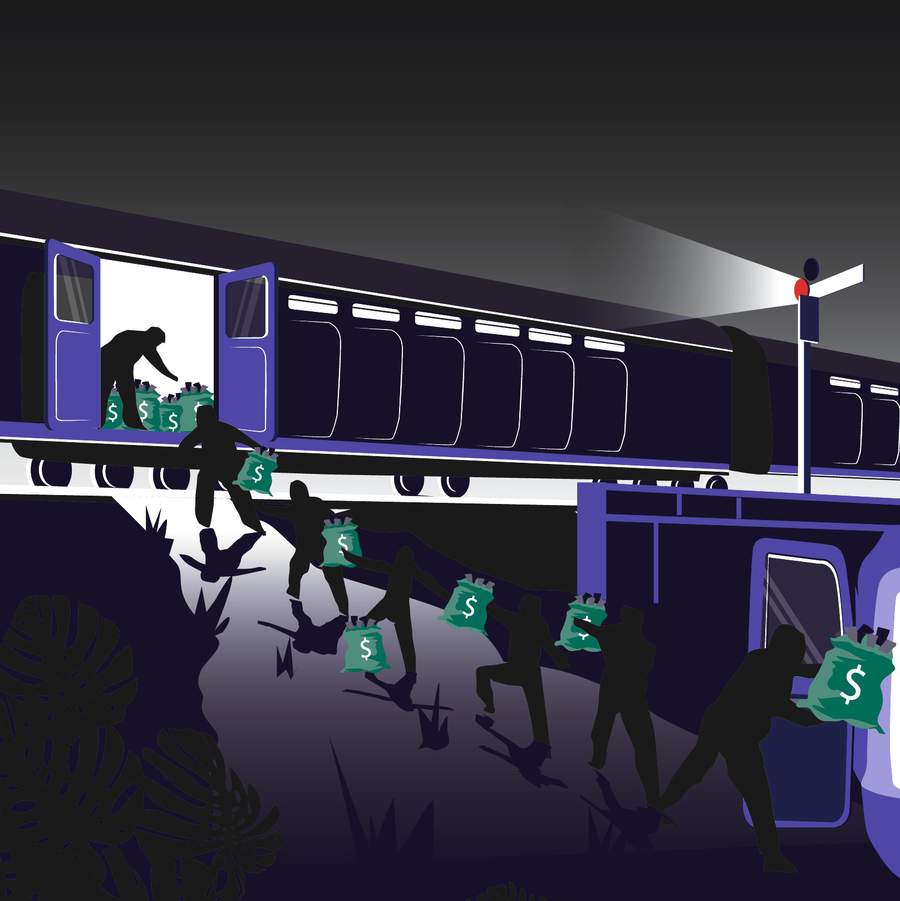The Great Train Robbery of 1963
by Ailsa Harvey · 18/09/2019
How was a notoriously bold and skilful heist foiled by a game of Monopoly?

After emerging from prison in 1962, Bruce Reynolds, along with a few of his close accomplices, began to devise a daring plan. They sought to steal from a post office train packed with registered mail, which almost always contained cash. And to make this potential hit even sweeter, the team was advised to strike after a bank holiday.
Reynolds and the South West Gang of London allied themselves with the South East Gang, and the team quickly set about planning and executing one of the most notorious heists in history. Relying on an inside man known as the ‘Ulsterman’, the robbers knew exactly which train to stop and when to do it. Their plan to halt the train with a stop signal worked, but with the heist in full swing the robbers hit a major snag.
One member of the team, known as ‘Peter’, had spent several months learning about the mechanics of driving a train from railway staff under the guise of being a railway enthusiast. Confident that he could move the train, his belief evaporated as he confronted a huge diesel engine quite at odds with the smaller trains he’d been handling. The team had to coerce the train’s driver to move them forwards.
After the money had been transferred to their getaway cars, the robbers retreated to a hideout. They’d stolen £2.6 million (£30 million today) in a matter of minutes without the use of guns or excessive force, but their plan soon to fell apart.
The first blunder came from a gang member who told the train staff to wait for 30 minutes before calling the police, which revealed a key clue: their hideout must be nearby. That, coupled with the fingerprints left at the hideout after the men had been playing Monopoly, was to seal the robber’s fate. The police soon rounded up the majority of the members involved.
Four steps in the near-perfect heist:

1. Planning
The gang wanted to hijack a Travelling Post Office train heading from Glasgow to London. Their target was the second carriage from the front – the High Value Package carriage. They needed to map the train’s journey to make sure they were ready and waiting when it arrived.

2. Stop signal
At around 3am, as the train approached their location, some of the gang members engaged a stop signal, forcing the train to a halt. They managed to block the ‘Go’ signal (a green light) using simple leather gloves, and a six-volt battery was used to activate the red ‘Stop’ light.

3. All aboard
The gang boarded the train, uncoupled the carriages that weren’t needed and convinced the driver to continue for another mile to Bridego Bridge, where the rest of the robbers were waiting. The team formed a human chain and unloaded 120 sacks in 15 minutes into getaway vehicles.

4. Laying low
The robbers drove back to their hideout, a rented farm stuffed with provisions, sleeping bags and bedding. They passed the time playing Monopoly, leaving behind their fingerprints. They fled the farm shortly after, but the police soon acquired this incriminating evidence.
This article was originally published in How It Works issue 103, written by James Horton
For more science and technology articles, pick up the latest copy of How It Works from all good retailers or from our website now. If you have a tablet or smartphone, you can also download the digital version onto your iOS or Android device. To make sure you never miss an issue of How It Works magazine, subscribe today!




